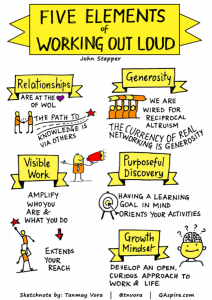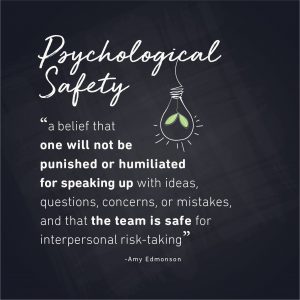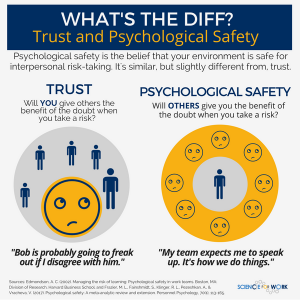The Visitor vs. Resident concept by David White (https://firstmonday.org/ojs/index.php/fm/article/view/3171/3049) made perfect sense to me from the beginning. Aren’t most of us often in visitor mode out of convenience? How many online workshops and webinars have I attended hoping I wouldn’t have to say anything? I was happy to participate via mentimeter or chat when invited to do so. Watched friends and acquaintances on Facebook, Instagram, and LinkedIn without sharing anything substantial myself. So I didn’t have to leave my comfort zone. And yet I have always admired the people who actively share their opinions and reflections on LinkedIn and express themselves so eloquently, get feedback and likes and are further shared…
Earlier this year, I participated in a Working Out Loud (WOL) Circle.
 WOL https://www.workingoutloud.com/; https://de.wikipedia.org/wiki/Working_out_loud) is a method where you practice, among other things, to be visible and to share (knowledge, thoughts, questions, problems…). Some of the exercises in the WOL workbook involve digital platforms such as social media. You start with simple tasks such as “liking”, then re-sharing, commenting and finally creating your own posts. Like this one, oops… 😉
WOL https://www.workingoutloud.com/; https://de.wikipedia.org/wiki/Working_out_loud) is a method where you practice, among other things, to be visible and to share (knowledge, thoughts, questions, problems…). Some of the exercises in the WOL workbook involve digital platforms such as social media. You start with simple tasks such as “liking”, then re-sharing, commenting and finally creating your own posts. Like this one, oops… 😉
But what are we afraid of when leaving a digital footprint? For me personally, it’s the fear of posting something that might not be 100% perfect or even wrong, that might cause controversy, that might not match the opinion of other people in my network. You expose yourself, make yourself vulnerable. In this context, the concept of psychological safety by Amy Edmundson (https://amycedmondson.com/psychological-safety/) came to my mind.
 Most often, the concept refers to the workplace, but it can also be extended to other areas. Psychologically safe teams or groups are characterised, among other things, by the fact that everyone contributes to roughly the same amount (similar proportions of speech) and dares to speak out without fear of sanctions. So, as a workshop host, if I want my participants to be more involved, I try to create a climate of trust, or more specific, of psychological safety.
Most often, the concept refers to the workplace, but it can also be extended to other areas. Psychologically safe teams or groups are characterised, among other things, by the fact that everyone contributes to roughly the same amount (similar proportions of speech) and dares to speak out without fear of sanctions. So, as a workshop host, if I want my participants to be more involved, I try to create a climate of trust, or more specific, of psychological safety.

Here are some examples who to foster psychological safety in online training (found on https://www.td.org/blog/speaking-up-cultivating-psychological-safety-in-virtual-training):
Appreciation: What Gets Rewarded Gets Repeated
Encourage participation and give Positive reinforcement for students’ statements (even small ones) like “thanks for sharing” “very good question” “excellent point” or “anyone else?”
Keep Breakouts and Class Sizes Small
With 5-6 Participants in a breakout session, they are more likely to speak up. In my experience, if a group is too small (2-3) and rather introvert, it can also be an awkward situation. I find 4-6 People in a Group ideal to share information on a personal, but not to private level.
Anonymity as a Tool
Start with easy participation like in anonymous tools or by using the chat. IT can break the ice and make an active and visible discussion on a deeper level more likely
Create Psychological Safety Through Cultivation
As a facilitator, nurture virtual environments of transparency, respectful disagreement, support, and appreciation, so that speaking up surfaces naturally, for example by setting rules and principles.
What “tricks” do you use to get your students involved? Please DARE to SHARE! 🙂






Miriam Fischer
October 19, 2022 — 8:33 am
Great ideas and reflection about psychological safety (ps) and great and useful resources, thank you for that! Don’t we need ps also in an onsite? Do students speak up more often in campus classes face to face in cohorts of 50 or 100 people or even more? I think the first time one says something in front of “important people” or a big audience, it takes courage for everyone, even those who seem to be so cool…
But you are right. if we publish content, you have to be ready to accept reactions, sometimes not those you really wished for. That’s why, for example, I’m rather reluctant. Funnily enough, I used to be less so when I was starting with blogging or other social media. But it is also important to participate and not simply leave the field to others.
I am looking forward to your next posts! 🙂
Karin Graf
October 21, 2022 — 8:00 am
Thank you, Miriam, for your valuable comment. I absolutely agree with you that psychological safety is just as important in analog settings. And of course the size and character of the audience also plays an important role. I just think that it is (even) more difficult to create an environment of ps and it takes considerable effort when the interaction happens online, so you have to pay special attention to this aspect in remote settings.
David Bevington
October 20, 2022 — 11:34 am
I like the way you link your prior experiences of WOL to the visitor resident model and explore ways WOL can help make visitors become involved residents.
Karin Graf
October 21, 2022 — 8:07 am
Thank you very much, David. I am indeed experiencing many eye openers at the moment while learning new content that I can confirm or combine with my existing knowledge – that is the best way to learn!
Selen Savsin
October 20, 2022 — 7:05 pm
Thank you Karin for sharing your wonderful insights as I also think many people feel stuck in that mental stage of openness. As we discussed in the webinar with Maha, being vulnerable and letting people in is not easy to do when you don’t feel the support. Great tips and hope to hear more in the comments too:)
Karin Graf
October 21, 2022 — 8:20 am
Thank you, Selen, for your inspiring thoughts. I think this ONL community is a wonderful example of an environment of psychological safety, as we are encouraged to be involved and give each other support.